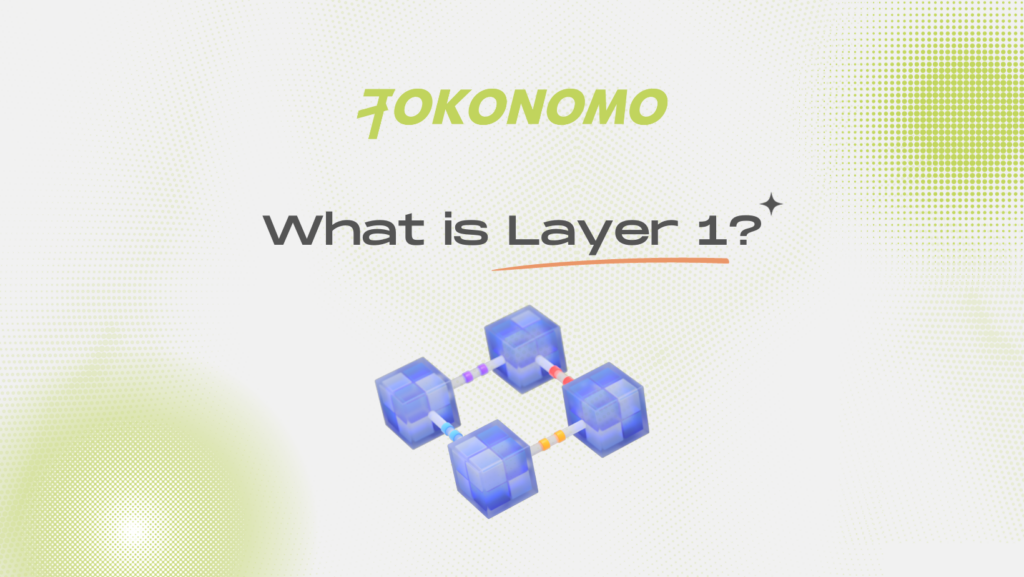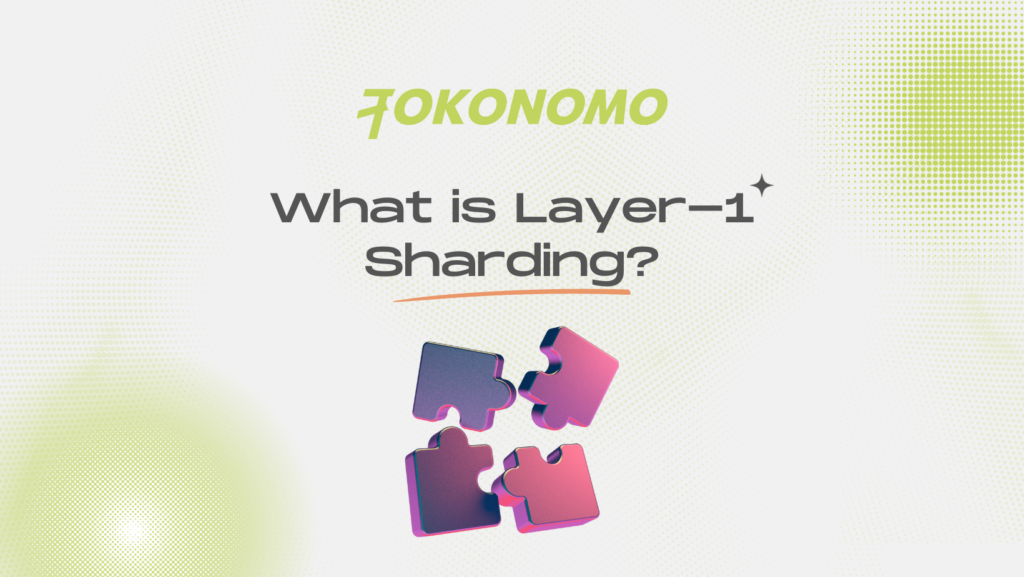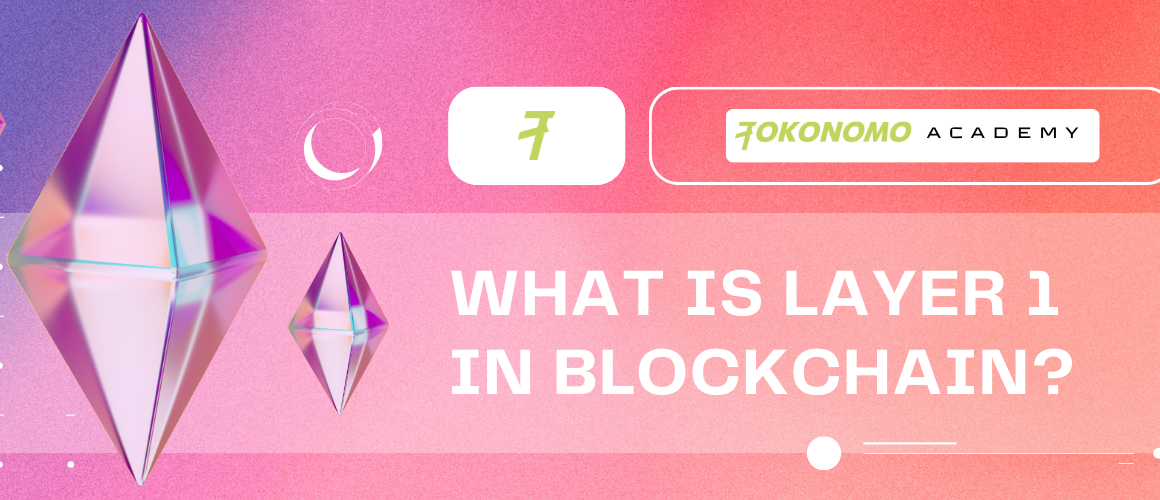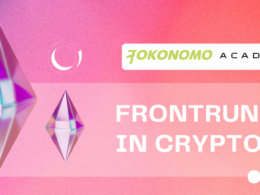Exploring the intricacies of blockchain architecture, various projects, and development tools involves delving into the concepts of Layer 1 and Layer 2. Gain insights into the connections between Polygon and Ethereum or the dynamics of Polkadot and its parachains by immersing yourself in the exploration of distinct blockchain layers.
What is Layer 1?
A layer-1 network, often interchangeably termed a base blockchain, constitutes the fundamental infrastructure for various blockchain platforms. Examples of layer-1 protocols encompass BNB Smart Chain (BNB), Ethereum (ETH), Bitcoin (BTC), and Solana, each serving as the primary backbone within their respective ecosystems. The designation of “layer-1” is assigned to these networks due to their pivotal role in the broader blockchain framework. In juxtaposition to layer-1, there exist off-chains and alternative layer-2 solutions that are constructed atop these primary chains.


To elaborate, a protocol attains layer 1 status when it autonomously processes and conclusively validates transactions on its dedicated blockchain. Additionally, these layer-1 protocols possess their inherent native tokens, utilized for the settlement of transaction fees.
Layer 1 Scaling
A prevalent challenge encountered with layer-1 networks lies in their limited ability to scale effectively. Bitcoin and other prominent blockchains have faced difficulties handling transaction loads during periods of heightened demand. Bitcoin, employing the Proof of Work (PoW) consensus mechanism, demands substantial computational resources.
Although PoW ensures decentralization and security, it also introduces a tendency for network slowdowns when transaction volumes surge. This results in prolonged transaction confirmation times and elevated fees.
Over the years, blockchain developers have been actively exploring scalability solutions, sparking ongoing debates on the most optimal alternatives. In the realm of layer-1 scaling, various options have been considered, such as:
- Expanding block size to accommodate more transactions within each block.
- Altering the consensus mechanism, exemplified by the anticipated Ethereum 2.0 update.
- Introducing sharding, a method of database partitioning.
Implementing enhancements at layer 1 demands substantial effort. Additionally, achieving consensus among all network users can prove challenging, potentially leading to community divisions or even a hard fork, reminiscent of the Bitcoin and Bitcoin Cash split in 2017.
SegWit


An illustration of a layer-1 scaling solution is found in Bitcoin’s implementation of Segregated Witness (SegWit). By altering the organization of block data and excluding digital signatures from the transaction input, SegWit effectively enhanced Bitcoin’s throughput. This modification resulted in a greater capacity for transactions per block without compromising the network’s security. Importantly, the implementation of SegWit occurred through a backward-compatible soft fork, ensuring that even Bitcoin nodes not yet updated to incorporate SegWit can still seamlessly handle transactions.
What is Layer-1 Sharding?
Sharding, serving as a widely adopted layer-1 scaling solution, plays a pivotal role in augmenting transaction throughput. This innovative technique, akin to database partitioning, finds application in enhancing the performance of distributed ledgers within the realm of blockchain technology. Through the strategic division of a network and its nodes into distinct shards, the objective is to efficiently distribute the computational workload, thereby elevating transaction speeds. Each shard assumes responsibility for managing a specific subset of the entire network’s activity, encompassing its transactions, nodes, and discrete blocks.


The beauty of sharding lies in its capacity to obviate the necessity for each node to uphold a comprehensive copy of the entire blockchain. Instead, each node contributes by reporting the completed work back to the main chain, fostering the sharing of local data states. This shared information encapsulates essential elements such as address balances and other key metrics.
Layer 1 vs. Layer 2
In the realm of enhancements, it’s essential to acknowledge that not every challenge can be addressed at the foundational layer. Owing to technological limitations, specific modifications prove to be arduous or nearly insurmountable within the primary blockchain infrastructure. An illustration of this is Ethereum’s transition to Proof of Stake (PoS), a process that has undergone years of intricate development.
Certain applications encounter hindrances when attempting to operate on layer 1 due to scalability issues. Take, for instance, a blockchain-based game facing impracticalities on the Bitcoin network due to protracted transaction durations. Nonetheless, such a game might still aspire to leverage the security and decentralization afforded by layer 1. In such scenarios, the optimal approach involves constructing atop the network utilizing a layer-2 solution.
Lightning Network
Layer-2 solutions are constructed upon layer 1 and depend on it to complete their transactions. An illustrious instance of such a solution is the Lightning Network. Given the prolonged processing time for transactions on the Bitcoin network during periods of high traffic, which can span hours, the Lightning Network facilitates rapid payments using Bitcoin outside the primary chain. The ultimate balance is subsequently communicated back to the main chain. In essence, this process consolidates all individual transactions into a single conclusive record, resulting in time and resource savings.
Layer 1 Blockchain Examples
Now that we have gained an understanding of what constitutes layer 1, let’s delve into some illustrative examples. The realm of layer-1 blockchains is characterized by extensive diversity, with numerous platforms catering to distinct use cases. It extends beyond the realms of Bitcoin and Ethereum, as each network offers distinctive approaches to address the blockchain technology trilemma encompassing decentralization, security, and scalability.
Harmony
Harmony, operating as an Effective Proof of Stake (EPoS) layer-1 network featuring sharding support, has established its mainnet with a groundbreaking approach. The blockchain comprises four distinct shards, each autonomously generating and validating new blocks simultaneously. Notably, each shard possesses the ability to operate at its own pace, resulting in the potential for varied block heights across the network.
Harmony has strategically embraced a “Cross-Chain Finance” strategy, a pivotal move aimed at attracting both developers and users to its ecosystem. The incorporation of trustless bridges connecting to Ethereum (ETH) and Bitcoin serves as a fundamental component, mitigating the customary custodial risks associated with traditional bridges. Harmony’s overarching strategy for scaling Web3 centers around the utilization of Decentralized Autonomous Organizations (DAOs) and zero-knowledge proofs.
With the trajectory of Decentralized Finance (DeFi) leaning towards embracing multi-chain and cross-chain opportunities, Harmony’s bridging services emerge as particularly enticing for users. The platform directs its focus towards enhancing NFT infrastructure, refining DAO tooling, and fortifying inter-protocol bridges.
At the heart of Harmony’s ecosystem lies its native token, ONE, which serves a dual purpose. Firstly, ONE is employed to settle network transaction fees. Additionally, users can stake ONE to actively participate in Harmony’s consensus mechanism and governance structures. Successful validators stand to gain block rewards and transaction fees as part of this incentivized model.
Elrond
Established in 2018, Elrond stands out as a layer-1 network leveraging sharding to enhance its performance and scalability. The Elrond blockchain, boasting a remarkable capacity, is capable of processing over 100,000 transactions per second (TPS). What sets Elrond apart are its two distinctive key features: the Secure Proof of Stake (SPoS) consensus protocol and the innovative Adaptive State Sharding.
The process of Adaptive State Sharding unfolds dynamically through shard splits and merges in response to fluctuations in network users. Every facet of the network’s architecture, encompassing state and transactions, is meticulously sharded. Validators play a crucial role by traversing between shards, thereby diminishing the vulnerability to malicious takeovers of individual shards.
In the realm of Elrond’s ecosystem, the native token EGLD assumes multiple roles. It serves as a medium for transaction fees, facilitates the deployment of decentralized applications (DApps), and acts as a rewarding incentive for users actively participating in the network’s validation mechanism. Additionally, it is noteworthy that the Elrond network proudly holds certification as Carbon Negative, actively offsetting more CO2 emissions than its Proof of Stake (PoS) mechanism is responsible for.
THORChain
THORChain functions as a cross-chain, permissionless decentralized exchange (DEX) operating on a layer-1 network constructed with the Cosmos SDK. Utilizing the Tendermint consensus mechanism to validate transactions, THORChain aims to facilitate decentralized cross-chain liquidity seamlessly, eliminating the necessity for pegging or wrapping assets—an aspect that typically introduces additional risk for multi-chain investors.
In practical terms, THORChain assumes the role of a vault manager overseeing both deposits and withdrawals, fostering decentralized liquidity while eliminating reliance on centralized intermediaries. The native token, RUNE, serves a dual purpose within THORChain’s ecosystem by facilitating transaction fee payments and playing a crucial role in governance, security, and validation processes.
Underlying THORChain’s framework is an Automated Market Maker (AMM) model wherein RUNE serves as the base pair, enabling the swapping of RUNE for any other supported asset. Conceptually akin to a cross-chain Uniswap, THORChain positions RUNE as a settlement and security asset, fortifying its role within liquidity pools.
Celo
Celo, born as a layer 1 network derived from Go Ethereum (Geth) back in 2017, has undergone significant transformations. Notably, it embraced Proof of Stake (PoS) and introduced a distinctive address system. Within the expansive Celo Web3 ecosystem, encompassing decentralized finance (DeFi), non-fungible tokens (NFTs), and innovative payment solutions, it has recorded over 100 million confirmed transactions. One noteworthy feature is the ability for anyone on Celo to employ a phone number or email address as their public key, enabling a user-friendly experience. Furthermore, the blockchain operates seamlessly on standard computers, eliminating the need for specialized hardware.
At the heart of Celo’s digital landscape is its primary token, CELO, which serves as a standard utility token for transactions, security, and incentivizing network participants. Complementing CELO, the Celo network features stablecoins such as cUSD, cEUR, and cREAL, generated by users and anchored through a mechanism reminiscent of MakerDAO‘s DAI. Notably, transactions conducted with Celo stablecoins offer the flexibility to be settled with any other Celo asset.
The innovative address system of CELO and the stability-focused stablecoin lineup align with Celo’s overarching mission to enhance crypto accessibility and foster wider adoption. This becomes particularly crucial considering the prevailing market volatility and the challenges newcomers face, potentially acting as a catalyst for broader acceptance in the crypto space.
Conclusion
In the contemporary landscape of blockchain technology, there are numerous layer-1 networks and layer-2 protocols. Navigating this complex ecosystem may initially seem daunting, but once you acquire a firm understanding of the fundamental concepts, comprehending the overarching structure and architecture becomes significantly more manageable. This familiarity with the foundational principles proves invaluable, particularly when delving into the exploration of novel blockchain projects, especially those emphasizing network interoperability and cross-chain solutions.











